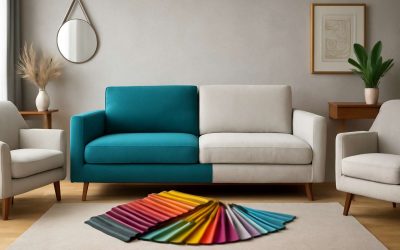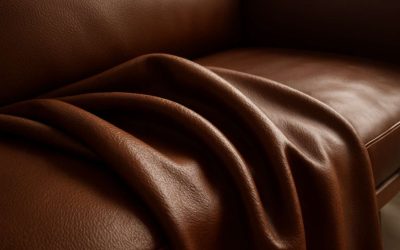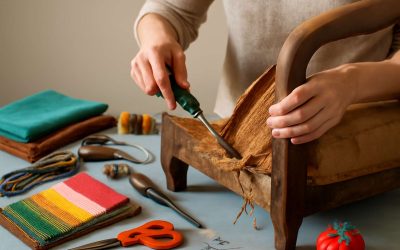Understanding Reupholstery Costs
Types of Furniture Affected by Reupholstery – Details on chairs, sofas, armchairs, dining benches, and other furniture pieces
Understanding reupholstery costs is essential when considering furniture renovation. The cost for reupholstery varies significantly depending on the type of furniture involved. For example, chairs and armchairs usually have a lower price point compared to larger pieces like sofas and dining benches. This is because the amount of fabric, foam, and labour required directly influences the overall expense.
Furniture pieces such as sofas often demand a higher cost for reupholstery due to their size and intricate detailing. Conversely, smaller items like dining benches tend to be more budget-friendly but can still dramatically refresh a room’s aesthetic. When planning for reupholstery, it’s important to understand which furniture pieces are affected and how their specific requirements impact the cost for reupholstery.
- Chairs
- Sofas
- Armchairs
- Dining benches
Each piece presents unique challenges and opportunities for customisation, which in turn influences the overall cost for reupholstery. Recognising these differences helps manage expectations and budget effectively for furniture refurbishment projects.
Factors Influencing Reupholstery Costs – Material choice, furniture size, complexity of design, and repair needs
The true cost for reupholstery is often a reflection of the intricate dance between material choice, craftsmanship, and the unique character of each piece. As fabric and foam selections sway in price, so too does the final bill, transforming a simple refresh into a bespoke masterpiece. The size of the furniture plays a pivotal role; larger items like sofas command a heftier quote due to the labour-intensive process and abundant materials required.
Moreover, the complexity of design—be it ornate carvings or modern sleekness—can elevate the cost for reupholstery, demanding meticulous attention to detail. To illustrate, consider this breakdown:
- Material costs, encompassing luxurious fabrics or durable synthetics
- Size and dimensions, influencing labour and material quantities
- Design intricacy, affecting time and skill needed
- Repair or restoration needs, which may uncover underlying issues requiring specialised attention
In essence, the true expense of reupholstery is not merely a number but a symphony of factors, each playing its vital part in the grand composition of furniture renewal. Recognising these influences helps craft a more informed, confident approach to budgeting for your cherished pieces.
Average Price Range for Reupholstery Services – General cost estimates based on furniture type and service provider
Reupholstery offers a stunning transformation for tired furniture, but understanding the true cost for reupholstery can feel like navigating a labyrinth. On average, the price range varies significantly depending on the type of furniture and the intricacies involved. For smaller pieces such as chairs or dining stools, you might expect to pay between £100 and £300, especially if the design remains straightforward. Larger pieces like sofas or sectional units, with their generous dimensions and elaborate details, can range from £500 to over £1,500.
Service providers often set their prices based on the labour intensity and material costs. Some upholsterers will offer a detailed quote that considers fabric quality, repair needs, and the complexity of design. To give a clearer picture, here are typical factors influencing the cost for reupholstery:
- Type and quality of fabric
- Size and dimensions of the furniture
- Design intricacy and detailing
- Extent of repair or restoration required
While these figures provide a general overview, remember that bespoke craftsmanship and premium materials can elevate the cost for reupholstery, turning each piece into a unique work of art. The expense isn’t just about replacing fabric — it’s an investment in longevity and aesthetic appeal that can breathe new life into your treasured furniture for years to come.
Breakdown of Reupholstery Expenses
Labor Costs – How labor hours impact the overall price
Within the intricate tapestry of reupholstery, labor costs often serve as the most unpredictable thread, weaving complexity into the overall cost for reupholstery. The number of hours dedicated to the craft can dramatically influence the final price, especially for furniture with detailed carvings or intricate fabric patterns. Skilled artisans invest not only time but precision, transforming each piece into a work of art—yet that meticulous effort comes at a premium.
In essence, the labor hours hinge on the furniture’s design and condition. Simpler pieces might require only a few hours, while ornate or antique items could demand days of careful restoration. To better grasp the impact, consider this: the total cost for reupholstery could double or even triple when complex upholstery techniques or high-end materials are involved. The key is understanding that the labor component is a vital factor shaping the overall expense, making it crucial to factor in the hours spent when estimating the true cost for reupholstery.
Material Costs – Fabric, foam, padding, and other materials
When considering the cost for reupholstery, material expenses often play a pivotal role. The choice of fabric, foam, padding, and other materials can significantly sway the final bill. High-quality textiles, especially those with intricate patterns or luxurious textures, tend to command higher prices. Similarly, premium foam and padding not only enhance comfort but also add to the overall expense.
For those seeking transparency, it’s helpful to understand how these costs break down. Typically, the fabric alone can account for a substantial portion of the total, sometimes up to 50%. Here’s a quick overview of common material costs involved in reupholstery:
- Fabric – from budget-friendly options to bespoke designer textiles
- Foam – varying in density and durability
- Padding – for added comfort and shape retention
- Additional decorative elements – such as trims, buttons, or nailhead accents
Each of these components influences the overall expense for reupholstery, especially when selecting specialised or high-end materials. The real art lies in balancing quality and budget, ensuring that the finished piece remains both beautiful and functional. Ultimately, material costs are a vital piece of the puzzle, shaping the true cost for reupholstery and offering a glimpse into the craftsmanship behind each transformed piece of furniture.
Frame Repairs and Reinforcements – Additional costs for structural repairs
Structural repairs often represent a significant chunk of the cost for reupholstery, yet they’re frequently overlooked until the work begins. Over time, furniture frames can weaken or warp, compromising the piece’s integrity and longevity. Addressing these issues early can save money in the long run and ensure a smoother reupholstery process.
Reinforcing or repairing a frame might involve tasks such as replacing broken legs, re-gluing joints, or adding extra support. These repairs not only stabilise the furniture but also affect the overall cost for reupholstery. The more complex or delicate the frame, the higher the expense—especially if specialised tools or materials are needed.
In some cases, additional costs for structural repairs can be broken down into:
- Frame assessment and diagnosis
- Material costs for replacement parts
- Labour for disassembly, repair, and reassembly
While these expenses may seem secondary, they are crucial to achieving a professional and durable finish. Ignoring structural repairs could lead to recurring issues and ultimately increase the total cost for reupholstery. So, transparency about these potential costs is vital when planning your project.
Removal and Disposal of Old Upholstery – Costs associated with teardown and waste management
Reupholstery isn’t just about swapping out fabrics; it’s a meticulous process that often involves a hidden layer of costs—most notably, the removal and disposal of old upholstery. While it might seem straightforward, the expense associated with teardown and waste management can quietly escalate, especially with antique or heavily padded furniture. These pieces demand careful dismantling to avoid damage, making the process more labour-intensive and costly than anticipated.
Typically, the cost for reupholstery includes the disposal of old fabric and padding, which can involve specialised waste removal services. Depending on the size and weight of the furniture, disposal fees may vary. Larger items, such as sofas or vintage armchairs, often require multiple disposal trips or even recycling services, pushing the expense upward.
To give clarity, the breakdown might look like this:
- labour for dismantling and removal
- waste disposal fees
- transportation costs for waste
Understanding these components helps in accurately estimating the total cost for reupholstery and avoiding surprises when the final bill arrives. The meticulous nature of this phase underscores the importance of transparency and planning—especially when reimagining cherished furniture pieces with a fresh look and renewed character.
Cost-Saving Tips for Reupholstery Projects
Choosing Cost-Effective Fabrics – Guidelines for selecting durable yet affordable materials
When considering the cost for reupholstery, selecting the right fabric can make all the difference in balancing quality and affordability. Choosing durable yet affordable materials not only extends the life of your furniture but also keeps expenses in check. Opting for mid-range fabrics such as polyester blends or woven synthetic textiles can often provide the perfect compromise, offering resilience without breaking the bank.
To maximise savings, it helps to focus on fabrics that resist wear and stains, reducing future maintenance costs.
- Look for tightly woven fabrics that stand up to daily use.
- Consider colours and patterns that hide minor stains or signs of age.
These choices can significantly influence the overall cost for reupholstery, making your project both economical and enduring. Remember, the right selection of materials transforms the reupholstery journey into a worthwhile investment, blending beauty with practicality.
DIY vs. Professional Reupholstery – Pros and cons to consider for cost savings
When it comes to the cost for reupholstery, choosing between DIY and professional services can significantly influence your budget. While the allure of a hands-on approach tempts many with the promise of savings, it’s essential to weigh the pros and cons carefully. DIY reupholstery offers a sense of mastery and potential savings on labour costs, but it demands patience, skill, and the right tools. Mistakes can be costly, both in time and materials, ultimately raising the total expenditure.
On the other hand, enlisting expert upholsterers ensures quality craftsmanship and durability, often reducing the need for future repairs. To balance costs effectively, consider the complexity of your project. For simpler pieces, a DIY might be viable, but intricate designs or antique furniture may warrant professional intervention.
- Time investment
- Skill level
- Material wastage
can all impact the overall cost for reupholstery, making it a careful dance between saving money and ensuring lasting beauty. Whether you choose to roll up your sleeves or call in the pros, understanding these nuances helps keep expenses in check and results impeccable.”
Prioritizing Repairs and Replacements – Which updates give you the best value
In the shadowed corridors of reupholstery, where every stitch holds secrets and every fabric whispers stories of yore, prioritising repairs and replacements becomes a strategic dance. The cost for reupholstery can spiral when unnecessary updates are pursued—each embellishment adding weight to your bill like a Gothic chandelier hanging heavy with crystals. Instead, focus on the essential elements that breathe new life into your furniture without draining your coffers.
Opt for repairs that preserve the integrity of the frame and structure, as these often yield the greatest value for the cost for reupholstery. When selecting fabrics, consider durability over extravagance; a sturdy, affordable material can withstand the ravages of time better than the most lavish velvets. Remember, sometimes a simple reupholstery, with minimal embellishments, offers a more compelling return on investment than elaborate redesigns that tempt fate with their complexity.
Balancing the allure of ornate updates against the pragmatic need for longevity ensures your investment remains both beautiful and wise—illuminating the path through the gothic labyrinth of reupholstery costs.
Regional Variations in Reupholstery Pricing
Cost Differences by Location – How geographic area influences prices
The cost for reupholstery is often a reflection of the intricate tapestry of regional variations that paint a landscape as diverse as the fabric choices themselves. In bustling metropolitan hubs, where craftsmanship is prized and labour costs soar, reupholstery can command a premium, often reflecting local economic vitality. Conversely, rural enclaves or smaller towns tend to offer more budget-friendly options, where the cost for reupholstery might be markedly lower due to less overhead and a different labour market dynamic.
Geographic area influences not only the price but also the type of materials and techniques available, creating a rich mosaic of options. For instance, cities renowned for their artisan furniture may see higher costs, justified by exceptional quality and bespoke service. Meanwhile, regions with abundant supply of upholstery materials and skilled artisans can often deliver more competitive prices, making the choice of location a crucial factor when considering the overall cost for reupholstery.
Economies of Scale and Local Market Factors – Impact of local demand and supplier pricing
Regional variations play a significant role in shaping the cost for reupholstery, often reflecting the unique economic landscape of each area. In bustling cities, high demand for craftsmanship and elevated labour costs push prices upward, making reupholstery a more premium service. Conversely, in smaller towns or rural regions, the cost for reupholstery can be considerably lower due to reduced overheads and a different labour market dynamic. This disparity influences not just the price but also the availability of materials and techniques—regions with a rich artisan tradition might charge more for bespoke work, while areas with easy access to supplies can offer more competitive rates.
Local demand and supplier pricing contribute heavily to these regional differences. In areas where upholstery services are scarce, prices tend to climb, driven by limited competition. Conversely, regions with a saturated market of upholsterers often see more budget-friendly options. The economy of scale also comes into play: larger cities with high-volume demand can negotiate better prices with suppliers, which can sometimes lower the overall cost for reupholstery. Understanding these local market factors is crucial when budgeting for reupholstery, as they directly impact both material costs and labour charges.
Additional Costs to Keep in Mind
Customization and Special Requests – Pricing for personalized designs or unique features
When considering the cost for reupholstery, many overlook the impact of customization and special requests on the final bill. Unique designs, personalised stitching, or bespoke fabric choices can significantly elevate the price. While standard reupholstery might fall within a predictable range, adding intricate patterns or specialised features often introduces additional costs.
For example, if you desire tailored embroidery or a one-of-a-kind fabric, expect to pay a premium. These customisations require extra labour and specialised materials, which can push the overall cost for reupholstery higher than initially anticipated. It’s worth noting that some service providers may charge per hour for custom work, making transparency during the quoting process essential.
In essence, balancing your desire for individuality with your budget is vital. If you’re aiming for a truly distinctive piece, be prepared for the potential extra costs associated with bespoke features—these enhancements, although more expensive, often transform your furniture into a timeless statement.
Expedited Services – Additional charges for faster turnaround times
When contemplating the cost for reupholstery, one factor often overlooked is the supplementary charge associated with expedited services. While standard turnaround times can be reasonable, urgent requests for faster completion inevitably come with a premium. This is especially true when a deadline looms, and the reupholstery process needs to be accelerated—demanding additional labour, resources, and sometimes even overtime wages for skilled artisans.
Many reputable providers impose additional costs for prioritising your project. This can vary widely but generally includes a percentage of the base cost for the reupholstery or a fixed fee. For those with time-sensitive needs, understanding these extra charges upfront can prevent unwelcome surprises. Some companies even offer tiered options, where a faster service might cost twice as much as the standard timeframe.
- Assess your urgency and weigh it against your budget constraints.
- Ask potential service providers about their specific fees for expedited turnaround times.
- Factor in how quickly you require your furniture to be restored when budgeting for the overall cost for reupholstery.
Ultimately, the decision to opt for expedited services hinges on balancing the desire for efficiency with the financial investment involved. While the additional charges for faster reupholstery might seem steep, they often ensure your treasured furniture returns to your space with minimal delay—transforming an urgent need into a seamless experience.
Warranties and Guarantees – Understanding included vs. optional coverage
In the realm of reupholstery, understanding the labyrinth of additional costs is vital to navigating your project’s true expense. Warranties and guarantees are often the unsung guardians of your investment, yet their scope can vary dramatically. Some providers include comprehensive coverage within the initial cost for reupholstery, offering peace of mind should unforeseen issues arise. Others may present warranties as optional extras—enticing but subject to extra fees—meaning you must weigh their value against the price tag.
It’s essential to scrutinise the fine print: does your warranty cover frame repairs, fabric replacement, or only labour? When contemplating the overall cost for reupholstery, consider whether opting for a guarantee might save you money in the long run. An inclusive warranty can be a guardian against unexpected expenses, but if it’s an optional add-on, the initial savings could be a false economy.
Some artisans offer tiered guarantees, allowing you to choose a level of coverage that aligns with your budget and expectations—adding a layer of customisation to the often complex dance of reupholstery costs.



0 Comments